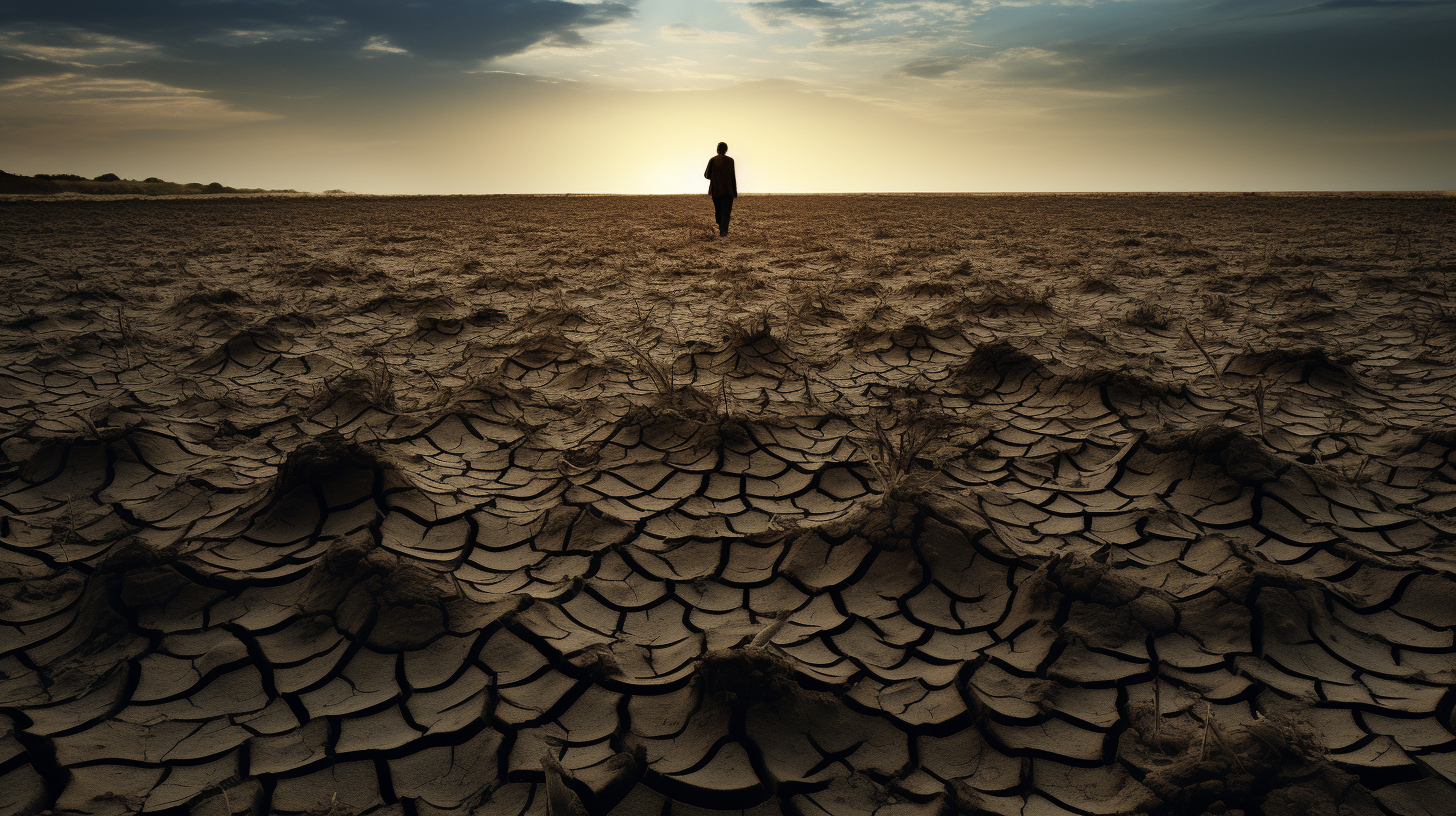In the theater of calamity that is our present dystopia, there exists a narrative thread so distressingly verdant it’s akin to grasping at straws in a field of thorns. ‘Seeds of the Doomed: The Fate of Agriculture in a Barren Tomorrow’ peels back the Earth’s scorched skin to reveal the ashen heart of what once was humanity’s cornucopia.
Akin to the prophecy unfurled by Dr. Aleksei Dryden, our landscape is not merely changing; it is retreating into a visceral nightmare. The pallid skeletons of trees stand in stark contrast to the robust forests of yore, and our fields, once bounteous, now lie fallow as if giving up the ghost of the green revolution.
Modernity promised us Edenic orchards of endless fruits; instead, we are stranded in a veritable wasteland, where the delicate dance of pollination has become a dirge. Our land, which should have been graced with golden waves of grain, has turned traitor, its cracked and barren earth a treacherous chasm gulping down the last droplets of hope.
The marketplaces, once cacophonous with the symphony of commerce and trade, are silent mausoleums. The shelves, which held promises of sustenance, stand desolate and echo with the quietude of the ‘Nevermore to Nourish’ prophecy – a chilling premonition of current misery mimicked in the ‘Crops Crumble as Pollinators Perish.’
As we wade through the desiccated remnants of our past negligence, one must ponder the fate of agriculture in the forthcoming times. Are the tales of amber waves and verdant landscapes now just folklore for the impressionable minds of the future?
Spanning the global breadbaskets that fed nations, crop failures have become not the exception but the norm. Each year, forecasts paint a grimmer picture; the annual yields forecasted by optimistic algorithms fall short, as do the faces of those relying on their fruition.
Dr. Dryden’s forewarnings resonate with the pleas of countless others who, standing before the precipice, implored action. ‘Beyond Hunger: A World Starved for Change’ wasn’t a caution; it was a prelude to today’s eulogy. These were the cries of Cassandra left unheeded, and now, we dine on the consequences of our collective hubris.
Our tale is one of loss – loss of tradition, of culture, of life. It’s a tapestry woven with the threads of unsustainable tactics and biodiversity collapse, the fabric of our existence now threadbare and moth-eaten. Technology, heralded as the savior of mass agriculture, faces an impossible foe in nature’s wrath, leaving us asking: where will our next meal come from, if at all?
Surely, there exist pockets of rebellion — alcoves of green hope sowing seeds among metallic towering remains. Rebel botanists and guerrilla gardeners, acting as chroniclers of the once abundant, try to steel sprouts against the harsh winds of our reality. Yet, the looming question dangles like Damocles’ sword – is this the last vestige of resistance in a war already forfeited?
Wrapping one’s head around the enormity of our plight is as overwhelmed as being suffocated by the creeping vines of our past missteps. ‘The Seeds of the Doomed’ doesn’t aim to nurture false hope onto barren soil but seeks to illuminate the dire straits of agriculture’s precipice from which we hang by mere filaments.
Where do we go from here? What legacy do we leave when the ground we’ve salted can no longer suffice to birth even the meekest of flora? These questions, heavy as the dust clouds that plague our horizons, must not go unanswered or unaddressed.
We might not scribe the chapters of immediate next steps, but our story’s ink is far from dry. The soil beneath our feet — a soil steeped in the cost of progress — is the same soil that begs us to stop, listen, and take heed, but find solace in the certainty that the sobering truth always takes root, even in the most arid of lands.
In the echoes of the void that has swallowed what we’ve cherished, perhaps, just perhaps, the barren tomorrow will still whisper a tale of caution and reverence for the once and future seed.
